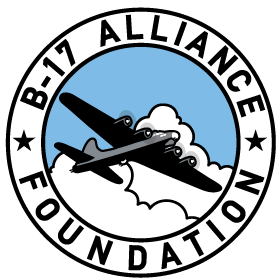Here is an update on Engine #2 (above)
Restoring a vintage World War II aircraft is no easy task. It requires a solid commitment on the part of the restorer and typically takes many years to accomplish. The Restoration demands a large workspace (typically a hangar), specialized aviation tools and materials, construction and metalworking skills, FAA certification, a financial commitment, unwavering passion for the project, and dedication to the end goal.
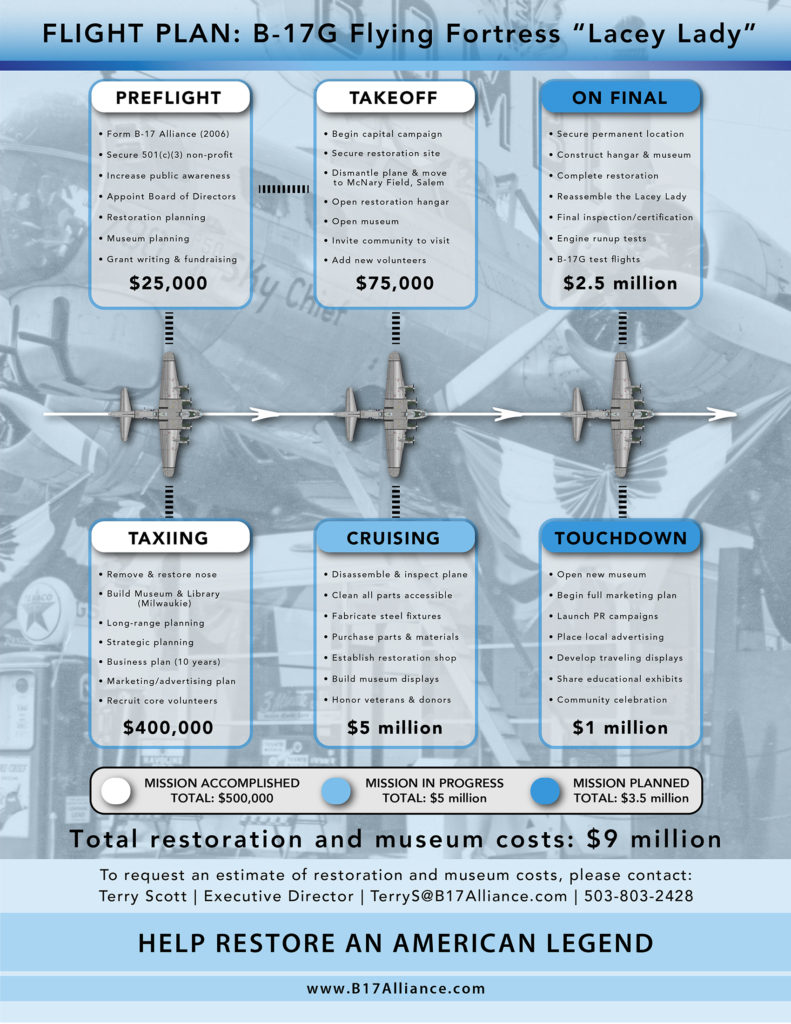
The B-17 Alliance Foundation is proudly working towards returning to the skies the famous “Milwaukie Gas Station Bomber”, a World War II B-17G Flying Fortress now known as the “Lacey Lady.” Returning the Lacey Lady to her original flying glory will allow the aircraft to fly in honor of the valiant men and women who served our country at home and abroad. A massive historical aircraft, the “Lacey Lady” boasts a wingspan of 103.9 feet, 75 feet in length, and a gross weight of 65,000 pounds, carrying an intimidating average bomb payload of 4,000-5,000 pounds and outfitted with 13 Browning .50-caliber machine guns. Her combined output of 4800 horsepower comes from the four Wright R-1820 engines, enabling the B-17G to reach speeds up to 305 miles per hour. It’s no wonder that Luftwaffe pilots were said to have suffered from “vier motor schreck,” or “four-engine fear.”

In short, B-17s like “Lacey Lady” were the titans of the sky in World War II. And they’re equally colossal on the ground. This is why the restoration process of an aircraft of this magnitude is no small feat. It must be completed in the same way you would ‘eat an elephant.’ (One bite at a time.)

Therefore, to properly tackle the restoration of this beauty, we’ve dismantled “Lacey Lady” into sections in order to ensure proper inspection, repair, and renovation.
Below we have included a list of completed restoration projects and benchmarks for “Lacey Lady,” in addition to what we’re currently working on in the hangar.
For questions about our restoration of the bomber, or to learn more about the restoration process as a whole, please feel free to contact us or schedule a tour of the hangar facilities.
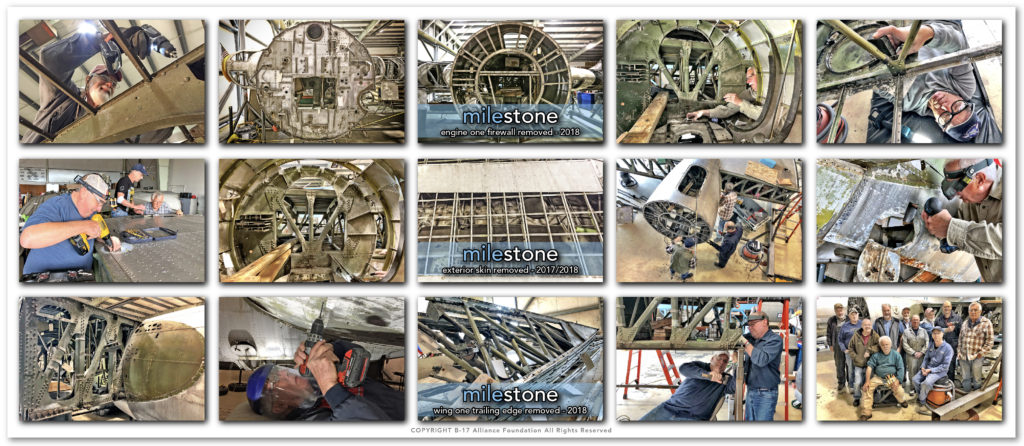
Restoration project accomplishments and benchmarks include:
- Removed all four engines from mounted wing positions
- Dismantled, transported, and removed entire aircraft out of Northwest weather
- Completed phase one of the Ball Turret restoration – Travel Exhibit completed
- Purchased one of a the few remaining Top Turrets in the world – Travel Exhibit completed
- Completed phase one full exterior restoration of the Nose Section – Nose Section married to cockpit section
- Dismantled, inventoried, and prepared “wing one” section one for inspection
- Designed, fabricated and installed custom-built fixtures for the separate aircraft sections including: fuselage, cockpit, Radio Room, Bomb Bay, “wing one rotisserie”, Nacelle Fixture support, and engine number one
- Designed, built, and equipped workshop for parts fabricating, machining, and tool inventory
- Built and secured nationwide partnerships towards full restoration
- Completed custom built Blasting Room for sandblasting and restoring large parts
- Created and established restoration system for parts cleaning and washing
- Built nationwide partnerships and established relations for mutual collaborations
- Established regional and local community support, including a social media following exceeding 10,000 people
- Developed and deployed AIMS inventory management database system
- Initiated intranet-based application for development of in-house support as needed for restoration
- Created and implemented full process training systems for all crew members
- Purchased 24′ traveling exhibit trailer
- Manage and Maintain a fiscally responsible project budget
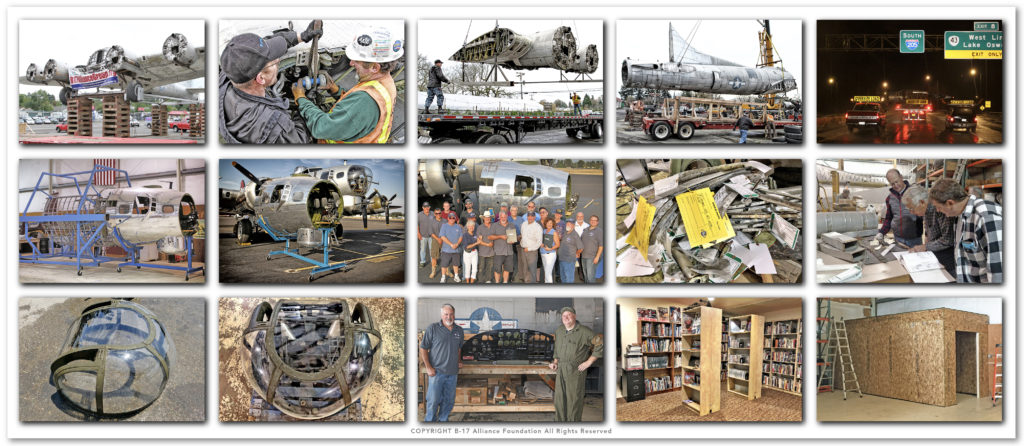
10. Entering parts inventory 11. Top Turret 12. Top Turret 13, Instrument panel 14. Research Library 15. Tool workshop and storage
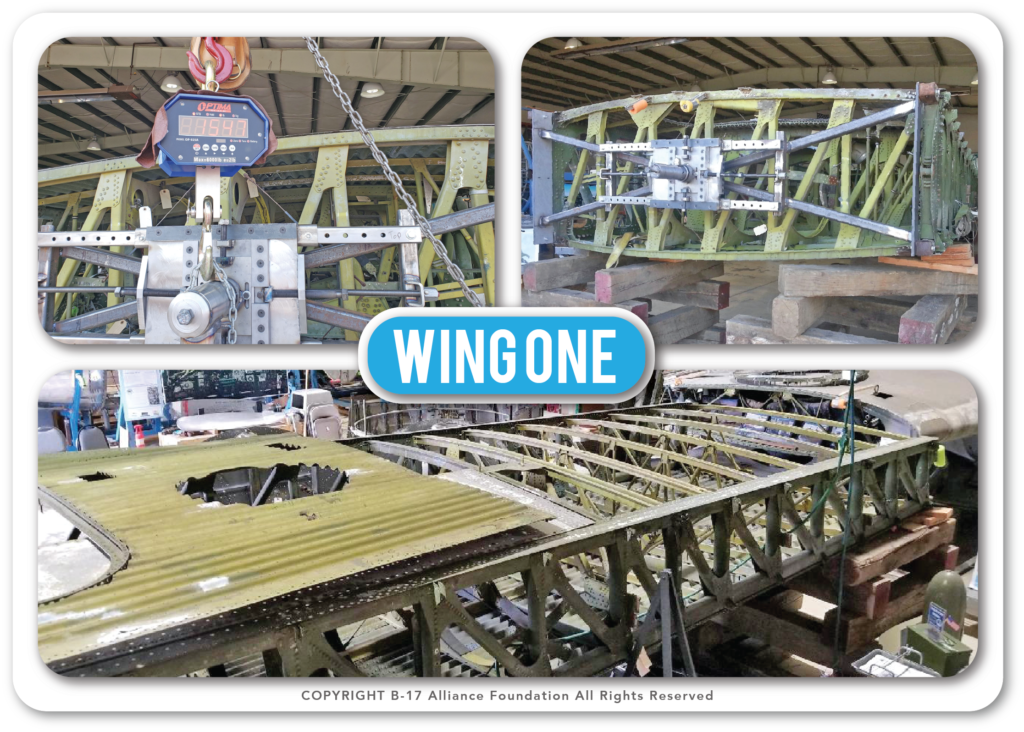
View Milestone and Restoration Photographs (Facebook)
Click here to view our Vision & Roadmap for the restoration of “Lacey Lady.”
